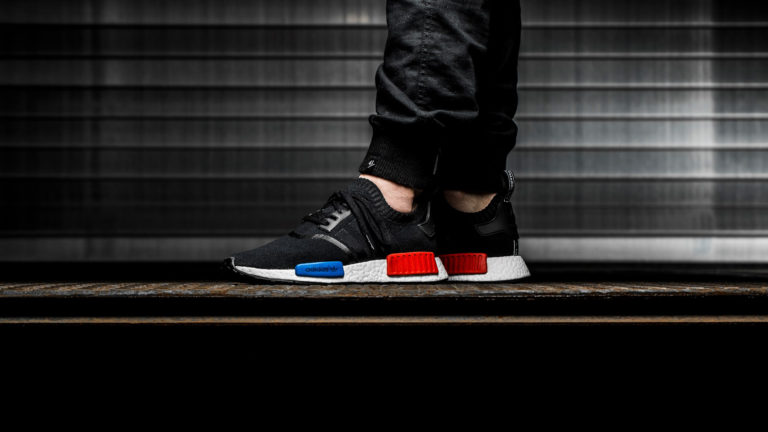BY MATT WELTY, NATALIE EDGAR [Complex]
An easy way for millennials to make money on social media is to take pretty pictures of themselves and hope that a lot of people follow them. For sneakerheads, this is an expanding space, and brands are running to people with juice online to post their products and convince others to buy them. It’s simple marketing, but it’s enticing a new generation of footwear enthusiasts to find a new way to supplement their incomes. For some, it can be a way to get free shoes, for others it’s coming close to a full-time job.
The term “influencer” is often vague and up for debate (and chastisement). But it generally is placed on people with a decent social media following—it could range from anywhere from someone with a few thousand followers to those who have over a million — that brands target to post their products early in order to gain exposure outside of traditional media outlets. The money that these influencers make varies. It might be based off of what type of deal they sign, or it could be tiered on the size of their respective audiences.
“My Adidas deal was worth $30,000 for the year,” an anonymous influencer says. “This included maybe five photo shoots for their social media accounts and frequent posting of the product. This was one of the lower end deals, though. It wasn’t exclusive, I know some girls are [signed to exclusive deals] and that costs much more. I’d say in the $50,000-$75,000 range. Nike isn’t as willing to pay because they know we’ll post [their sneakers] regardless. So they just send product.”
We reached out to multiple brands for this article and none wanted to make a statement.
Not all influencers can make this much money, though. It’s usually much less than these lofty influencing deals. “People can get paid anywhere from a few hundred dollars to $5,000, depending on what kind of content they create,” an anonymous source says.
But the number of followers that someone has doesn’t necessarily mean that they’ll be able to find consistent work in the influencing field. It ultimately comes down to people creating content that brands want to use or represent their product. “I believe myself and others look at creative content as being more valuable,” says Brandon Edler, who works at Finish Line as Content Manager and Creative Strategist and often hires influencers for the company. “Great content is always going to find a way to reach the masses.”
When it comes to becoming a full-time influencer, however, the job isn’t as easy it seems, and it will require people to have an enormous following and create content for multiple platforms, not just Instagram. Edler says, “You need to be in the millions on Instagram, YouTube, Twitter, and SnapChat to really make it work for you full-time. But that’s all subjective depending on your cost of living.”
In terms of there being a wage gap for influencers, at least when it comes to those involved with sneakers, Edler doesn’t see any difference between what they pay men and women. In fact, he says it’s a case-by-case basis of what kind of content the influencer is looking to make for the brand, when it comes to asking for additional payment. “On our end it is dead even unless the influencer pitches something that requires additional budget to create something unique,” he says. “An example would be when we had an influencer go up in a helicopter to create content.”
New Balance selected four influencers to help launch its custom 998 program in 2015. Image via New Balance
The world of influencing has come under a decent amount of scrutiny. Industry insiders often wonder how much reach someone with a few thousand followers on Instagram has when it comes to brands selling sneakers, and the Federal Trade Commission has placed guidelines to regulate the blogging or “influencing” industry. Often, those paid by brands to post product will not announce that they’re being compensated by the companies, which is viewed as a deceptive practice. According to the FTC’s website, “The financial arrangements between some bloggers and advertisers may be apparent to industry insiders, but not to everyone else who reads a particular blog. Under the law, an act or practice is deceptive if it misleads “a significant minority” of consumers. Even if some readers are aware of these deals, many readers aren’t. That’s why disclosure is important.”
This is why you’ll often see hashtags attached to posts that say, “#sponsored #giftedbyinsertbrandname.” To Edler, this disclosure is important. He says, “It’s really corny when the person clearly was paid to post something or review it and they play it off [like they weren’t]. It just alienates the fanbases that people work so hard to cultivate over years.”
In short, there is money to be made by being a sneaker lover who has a lot of followers on social media or takes great photos. But getting the big money that will let you travel the world and swim in free shoes may be harder to come by then some think, especially when it feels like everyone’s becoming an #influencer these days. And remember, the people who have the most influence, in terms of non-celebrities, might not even be the person with 100,000 followers. It might be a random person who makes a shoe look good and make others want to buy it, the way it used to be.


